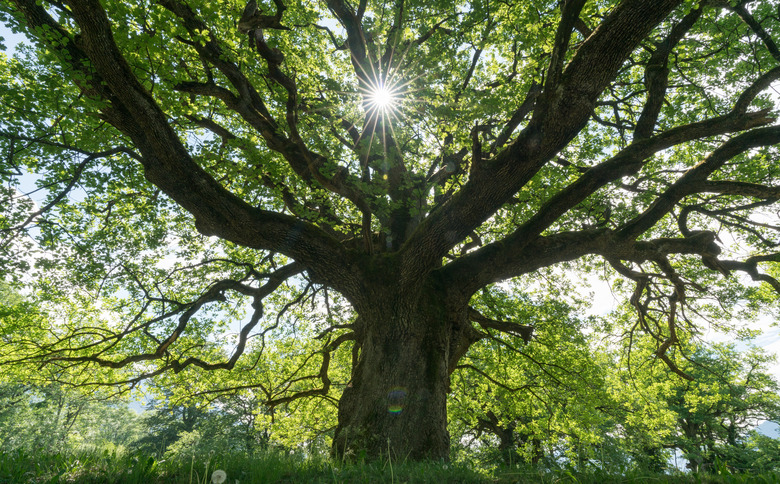Characteristics Of Oak Trees
Some small pockets of the United States are ideal for growing specific oak (Quercus spp.) trees while other species of the genus aren't as particular. With hundreds of different types of oaks growing in the northern hemisphere and the fact that the oak lifespan ranges from hundreds to thousands of years, the stately tree is an integral part of U.S. history. You'll find oak trees of many species and cultivars growing in U.S. Department of Agriculture plant hardiness zones 3 through 10, but not all thrive in all conditions and zones.
Characteristics of Oak Trees
All varieties of the mighty oak tree share some similar characteristics. Most grow from acorns on trees that are at least 30 years old, and they outlast almost any living thing found on earth. Most have a similar open, rounded shape, and many contribute hardwood that is used in building everything from homes to battleships.
Many oaks grow up to 100 feet tall, and the tallest recorded was a mighty red oak (Quercus rubra) that soared 134 feet tall, according to the Arbor Day Foundation. The differences in oak tree characteristics are best explained by examining the two groups of oaks – white oaks and red oaks.
The Red Oak Tree Group
Characteristics of the red oak group include leaves that have bristles or points and acorns that take two seasons to mature. Within this group are numerous species, including Southern red oak (Quercus falcata, USDA zones 6-9), pin oak (Quercus palustris, USDA zones 4-8) and black oak (Quercus velutina, USDA zones 3-9).
Although its name seems contrary for inclusion in this group, black oak truly is a member of the red oak group. The outer bark on mature trees is nearly black, but the inner bark is yellow to orange in color. The black oak is grown in the eastern United States and Canada, and the wood is rough-grained.
The White Oak Tree Group
Characteristics of the white oak group include leaves that have rounded ends with no bristly tips and acorns that mature in one growing season. Species within this group include the white oak (Quercus alba, USDA zones 3-8), the bur oak (Quercus macrocarpa, USDA zones 3-8), the sawtooth oak (Quercus acutissima, USDA zones 6-9), and the southern live oak (Quercus virginiana, USDA zones 8-10)
Some white oaks grow to massive sizes, with trunk diameters of 6 feet or more. Although many oaks are slow-growing, the sawtooth oak is a fast grower that may add 36 inches of height each year.
Live oak is one of the oldest living trees found around the world, with some testing over 700 years and others older than the pyramids. It grows best in urban and rural areas of the U.S. South. Its branches droop close to the ground, and it is often decorated by massive quantities of Spanish moss.
The dense wood is what drew builders to use live oak, and, as proof of its hardiness, the ship Constitution used live oak in its construction. Enemy cannonballs bounced off the frigate's sides, leading to the nickname "Old Ironsides."
